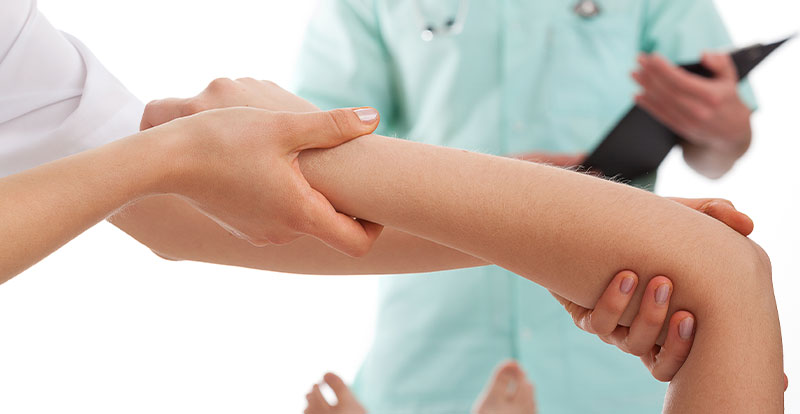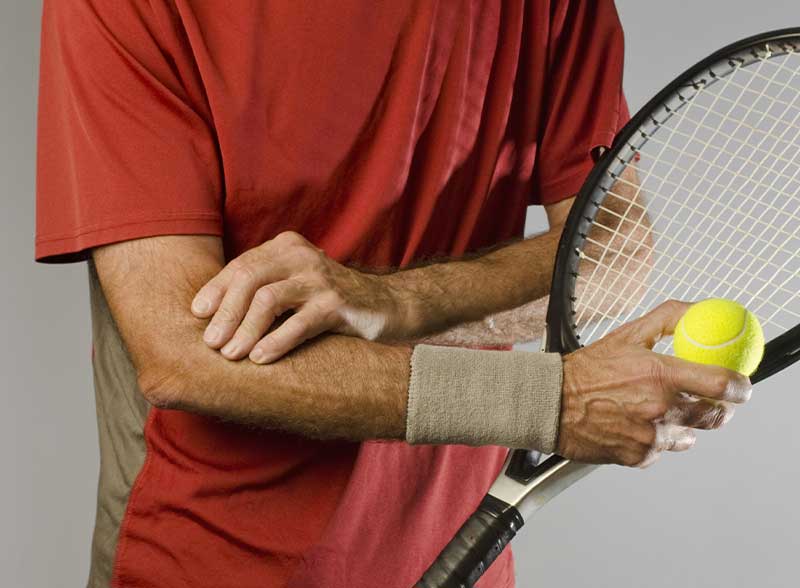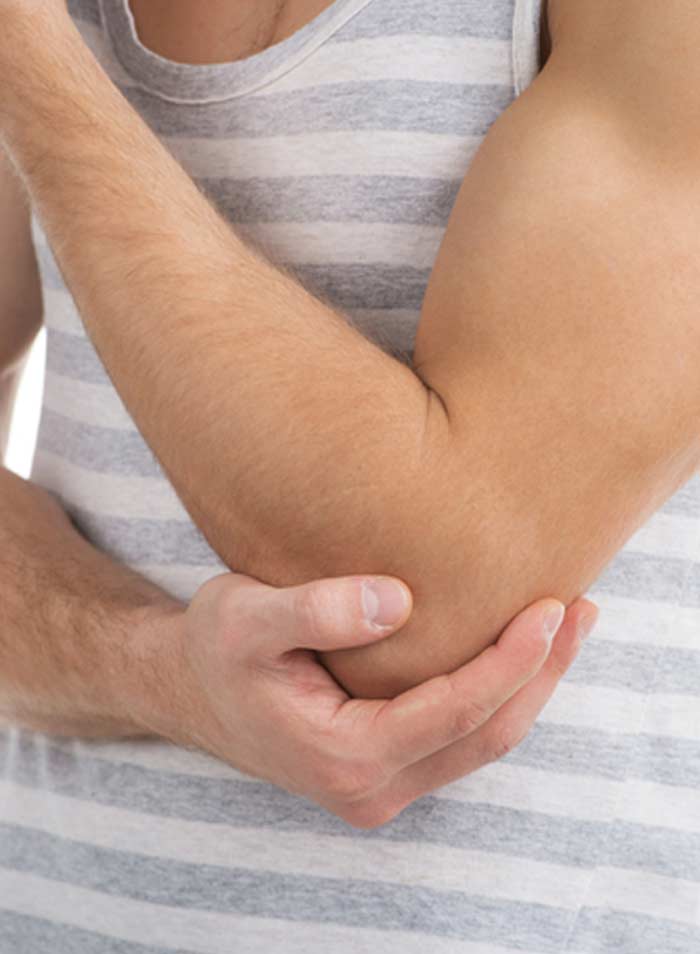
Tennis elbow and golfer’s elbow are both specific types of tendonitis.
Golfer’s elbow causes pain where the forearm muscle tendons attach to the inside of the elbow. Tennis elbow causes pain in the outer elbow where the tendons attach.
Except for the location of the pain, many other things associated with these conditions is the same.
Causes
The repetitive motions involved in both tennis and golf can cause the tendons in the elbows to become irritated and inflamed. When someone repeatedly swings a golf club or a tennis racket, the tendons experience stress. The risk of tendonitis is higher if someone is not using the proper technique in these sports.


Symptoms
Pain is the most common symptom. It is often described as a type of dull ache. The pain can increase when someone is using the affected elbow. Mild swelling and tenderness along the affected tendons are also possible.
It is important to not ignore tendonitis because those who continue to play their sport despite the pain put themselves at risk for tendon rupture. This is a serious injury that may need surgery to repair the affected tendon.
It is also possible to experience tendinosis. When this condition is present, the affected tendon may experience degenerative changes. It is also possible for abnormal new blood vessel growth to occur.
Diagnosis
The doctor typically starts with a physical examination to make a diagnosis. This examination, along with the patient’s symptoms, is generally enough to diagnose tennis or golfer’s elbow. However, in some cases, the doctor may want to perform imaging studies to get a closer look inside the patient’s elbow. This can provide information about the extent of the patient’s condition and rule out other possible causes for their pain.
Treatment
When the pain starts, it is important to immediately stop playing tennis or golf. At this point, conservative treatments are often adequate to alleviate discomfort and allow the affected tendons to heal. Patients should ice the elbow and elevate it. It can also be helpful to use compression via an elastic bandage. Just make sure that the compression is not too tight. The elbow should also be rested. The doctor can determine how long the patient should rest the elbow.
Over-the-counter medicines to alleviate pain might be used. A non-steroidal anti-inflammatory drug is often recommended since it not only reduces pain, but also inflammation. Acetaminophen is also appropriate, but this does not have an affect on the inflammation. If the pain persists, doctors might recommend injections of platelet-rich plasma or corticosteroids. These go directly into the affected tendon.

Physical therapy can help patients to restore range of motion and strength. This involves specific exercises focused on the affected tendons and muscles. Lastly, surgical procedures might be considered. These may include:
Physical therapy can help patients to restore range of motion and strength. This involves specific exercises focused on the affected tendons and muscles. Lastly, surgical procedures might be considered. These may include:
- Ultrasonic treatment
- Dry needling
- Surgery
Those who play these sports and are experiencing pain in their elbow should see their doctor. They can help to determine if tendonitis is present.
